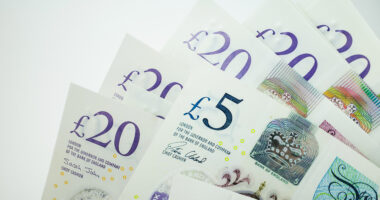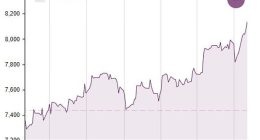
Should you be looking for a New Year’s resolution that will bring you a wealthier 2024, commit to paying into a cash Isa.
Individual Savings Accounts (Isas) are a more valuable part of a saver’s armoury than they have been for years.
They let you save completely tax-free — which is especially useful in times like these, when interest rates are high.
Below we run through why you need an Isa and highlight some of the top deals.
> Find all of the top-paying cash Isas using our best savings rate tables


Tax shelter: With savings rates soaring, Individual Savings Accounts, or Isas, are a more valuable part of a savers’ armoury than they have been for years
Don’t let tax eat into your savings interest
Savings tax is catching more in its net. Higher interest rates mean around 2.73 million savers are expected to pay tax on interest earned in ordinary savings accounts this year — up from 800,000 just two years ago.
As a basic-rate taxpayer, you pay interest on savings on any earnings above £1,000 a year. Higher-rate taxpayers can earn just £500 in interest before they start to pay tax, and additional-rate taxpayers pay tax on all of their interest.
That means a basic-rate taxpayer would only have to save £18,485 into a top savings account paying 5.41 per cent before they start paying tax. A higher-rate taxpayer would start paying tax with just £9,243 saved.
That is why Isas are so valuable. You can save up to £20,000 every tax year into an Isa without paying a penny of tax.
Move your old cash Isa to get a better rate
We receive a constant stream of questions from readers about what you can and can’t do with an Isa. It’s understandable — the rules are complicated. Even experts say so.
Sarah Coles, head of personal finance at wealth platform Hargreaves Lansdown, says: ‘The rules around Isa transfers aren’t well-known. Some people aren’t aware they can transfer a cash Isa.’
One reader from the West Midlands asks me: ‘Can you move cash Isas between banks and building societies?’
The answer is yes. You might decide to move your cash if your rate has not kept pace with new deals. However, the rules vary depending on when you opened your Isa.
If you opened the Isa within the current tax year, you must transfer all the money you have put in, plus the interest, to the new provider. This rule, known as the ‘current year’ rule, is due for the chop — but not until April 6 next year.
On cash Isas you opened before the current tax year, it’s a whole different story. You can switch your cash in these any which way among any number of providers.
Is it worth leaving a fixed rate Isa early?
Another reader from the Wirral wrote to ask me: ‘Can I move my fixed-rate Isa which still has a year to run for a better rate now?’
The answer is yes, though it depends how big the gap is between your current rate and the rate of the Isa you wish to switch to as to whether it is worth your while.
That is because your existing provider will likely penalise you for moving your cash early. This usually ranges from 90 days’ interest on a one-year fix to a whole year’s interest on a five-year fix.
Say, for example, you have a two-year Isa paying 3 per cent with a further year to run. In this case, you’ll earn £300 interest on each £10,000 for the next year if you stay put.
Switch to a top one-year deal now at 5 per cent and you’ll earn an extra £200 interest. But, if you must pay a fee of 180 days’ interest, you’ll lose £148 so your total gain will be just £52.
Can you open more than one Isa in a year?
A third reader asks if you can open more than one cash Isa within a tax year. The answer to this is a resounding no — even if you have not yet used up your full £20,000 allowance.
You cannot open two cash Isas within a single tax year. If you do, the second one will be disqualified and the interest will not be tax-free. You can instead add more money to the one you have opened — if the provider allows.
Make sure you always use the Isa transfer system
The golden rule on any Isa switch is not to do it yourself, as you could lose the tax benefits.
Instead, ask your newly chosen provider for its Isa transfer form so that you can fill it in.
The new and old provider will get together to move your money. This can take a lengthy 15 days — that’s more than double the time it takes to switch your current account.
But the City regulator, the Financial Conduct Authority, wants to see nine out of ten transfers carried out within seven working days.
You tend to earn slightly less on a cash Isa than in ordinary savings accounts due to the administration involved.
A lower rate Isa can beat a taxed account
But you may still be better off accepting a lower rate on a cash Isa. The top easy-access rate on ordinary accounts is 5.2 per cent from Ulster Bank. This works out as £520 interest a year on £10,000.
But if you pay tax on the full amount after using up your Personal Savings Allowance, you will end up with £416 after 20 per cent basic rate or £312 after 40 per cent higher rate.
If you put the same sum into a top cash Isa (5.08 per cent from Zopa), you’ll pocket £508 — but it is all tax-free.
On a one-year fixed cash Isa, the best rate of 5 pc will net you £500 of tax-free interest.
The best fixed-rate bond will give you £541 with SmartSave Bank’s 5.41 per cent. But this dives to £433 for a basic-rate payer and £325 for a higher-rate payer.









